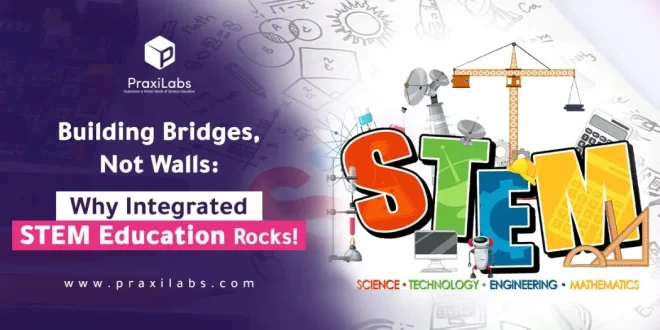Last Updated on October 28, 2025 by Muhamed Elmesery
STEM education is an approach that focuses mainly on Science, Technology, Engineering, and Mathematics. Traditionally, these subjects are taught separately, e.g., mathematics classes only or science classes only without any integration between the four educational disciplines and also with less focus on technology and engineering applications within the educational curriculum.
In this blog post, we will explore the concept of Integrated STEM education, which aims to provide students with a holistic approach to learning by seamlessly blending the four disciplines of science. We will discuss STEM modules, the impact of creative teaching STEM modules, the conceptual framework for integrated stem education, and more.
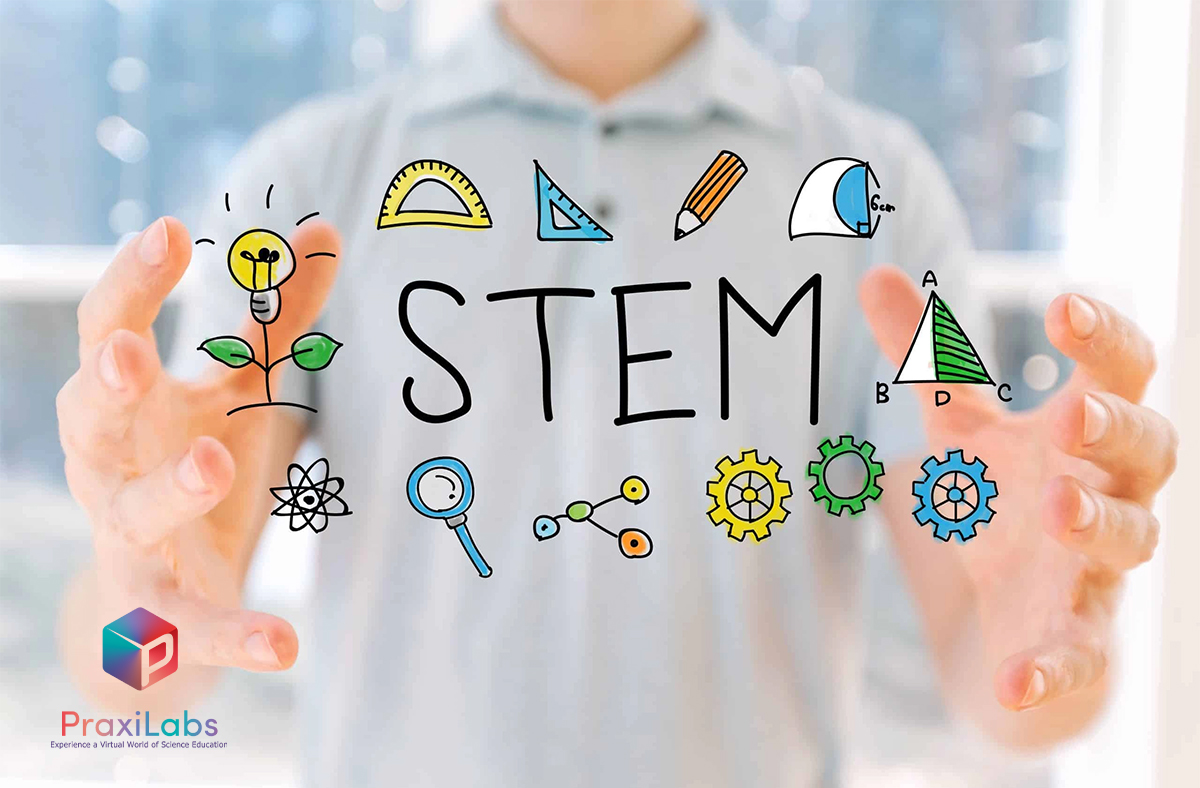
Table of Contents
The Power of Integrated STEM Education
Integrated STEM education integrates the subject matter of two or more STEM educational disciplines (Science, Technology, Engineering, and Mathematics) to create unique learning experience that aims to create an interest and a lifelong love of science in students from an early age, enabling them to become confident problem solvers in any area of life and supporting the critical analysis skills.
For example, teaching Science using an Engineering process (design-based learning). This approach recognizes that each STEM subject has overlapping, shared skills to offer.
Today, integrated STEM education refers to the combination of engineering and technology concepts into the field of science and mathematics education. Consequently, we can say that the potential of STEM education meets all requirements to improve the quality of education.
What is Meant By STEM Modules?
The STEM Modules are teacher-made educational units that are developed using the 5E teaching model (i.e., explore, engage, explain, elaborate, evaluate) teaching model.
The STEM modules consist of a combination of academic work, practical works in laboratories, and outdoor activities to enhance the students’ problem-solving skills, critical thinking, innovation, independence, and other critical skills.
The STEM modules stimulate the students in scientific issues, helping them understand the varied roles science plays in our world.
Students will be involved in STEM education topics and will work both in groups and individually;
- carry out data analysis.
- interpret the results.
- cover robotics and engineering topics.
- learn about augmented reality.
- design three-dimensional objects using 3D printers and create their products.
STEM modules consist of a series of activities that aim to understand STEM concepts and detect the best practices for module implementation in the classrooms.
STEM modules can contain teacher -reviewed and approved pretests, surveys, and posttests to measure the students learning’ growth before and after implementation of the STEM module activities and their attitudes towards module- style learning, respectively.
Examples of STEM Modules: cultural studies module – environmental education module – historical studies module – civics module – character education module – service leadership module.
Study | The Impact of Creative Teaching STEM Module
The following study aimed to investigate the impacts of enrolling in the creative teaching module in science, technology, engineering, and mathematics (STEM) education from high school students’ perspectives.
This study applied a case study and qualitative research approach involving 26 Grade 11 students and 31 Grade 8 students.
The creative teaching-STEM (CT-STEM) module, which comprised various activities related to energy literacy in real-world situations for the community’s well-being, involved outdoor STEM education activities with the assistance of two science teachers.
The CT-STEM module was developed based on the directed creative process model by applying four creative teaching strategies:
- Constructivist Learning.
- Discovery inquiry.
- Problem-based learning.
- Project-based learning.
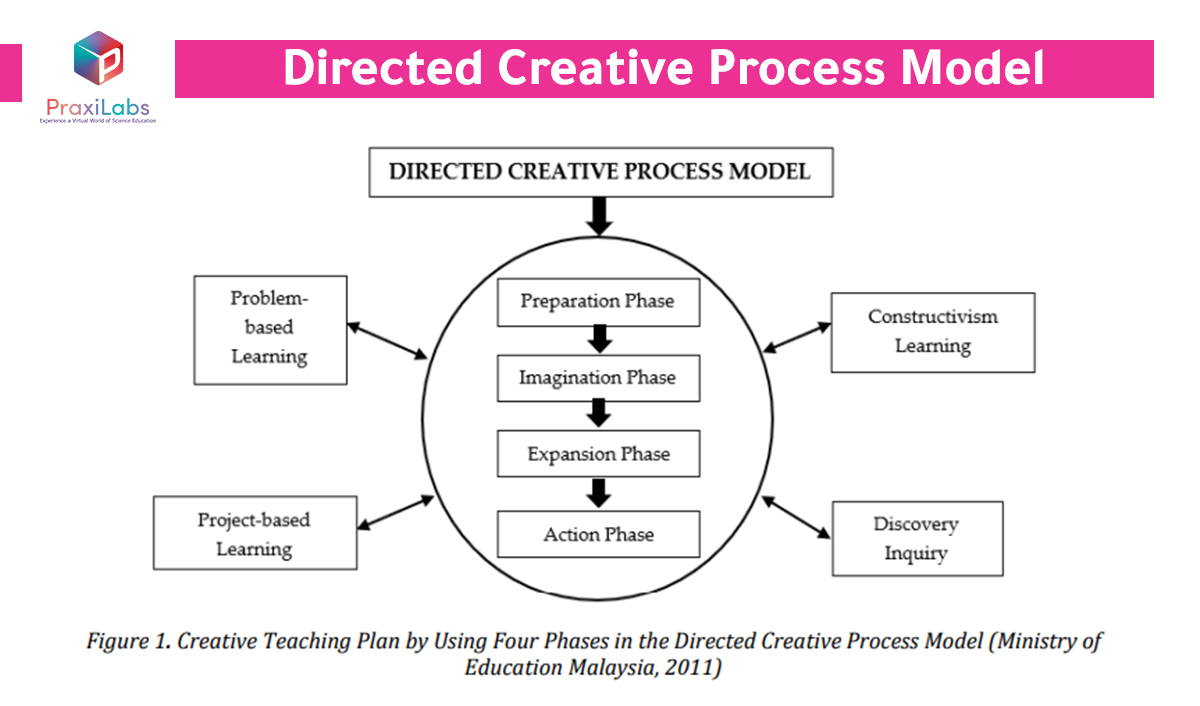
The previous figure shows the creative teaching plan by using 4phases in the directed creative process model
The results showed that the planned approaches could positively impact and build students’ creativity and create an exciting learning experience. Furthermore, the findings from the open-ended questionnaire instrument, observations, and analysis of the worksheets have shown enhancements in five themes: the development of
- Problem-solving skills with an emphasis on the element of sustainability education.
- High-level thinking skills.
- Active learning skills.
- Communication skills.
- Humanity skills.
The study : EU-jer. Available at: https://pdf.eu-jer.com/EU-JER_11_2_1183.pdf (Accessed: 30 July 2024).
On PraxiLabs, you can find different virtual lab simulations accessible anytime and anywhere.
A conceptual framework for integrated stem education
Research in integrated STEM can inform STEM education stakeholders to identify barriers as well as determine best practices. A conceptual framework for integrated stem education is helpful to build a research agenda that will, in turn ,inform STEM stakeholders to realize the full potential of integrated STEM education.
Developing a conceptual framework for STEM education requires a deep understanding of the complexities surrounding how people learn, specifically teaching and learning STEM content.
Research shows STEM education is enhanced when the teacher has sufficient content knowledge and domain pedagogical content knowledge.
Instead of teaching content, skills and hoping students will see the connections to real-life application, an integrated approach seeks to locate connections between STEM subjects and provide a relevant context for learning the content. Educators should remain true to the nature in which science, technology, engineering, and mathematics are applied to real-world situations.
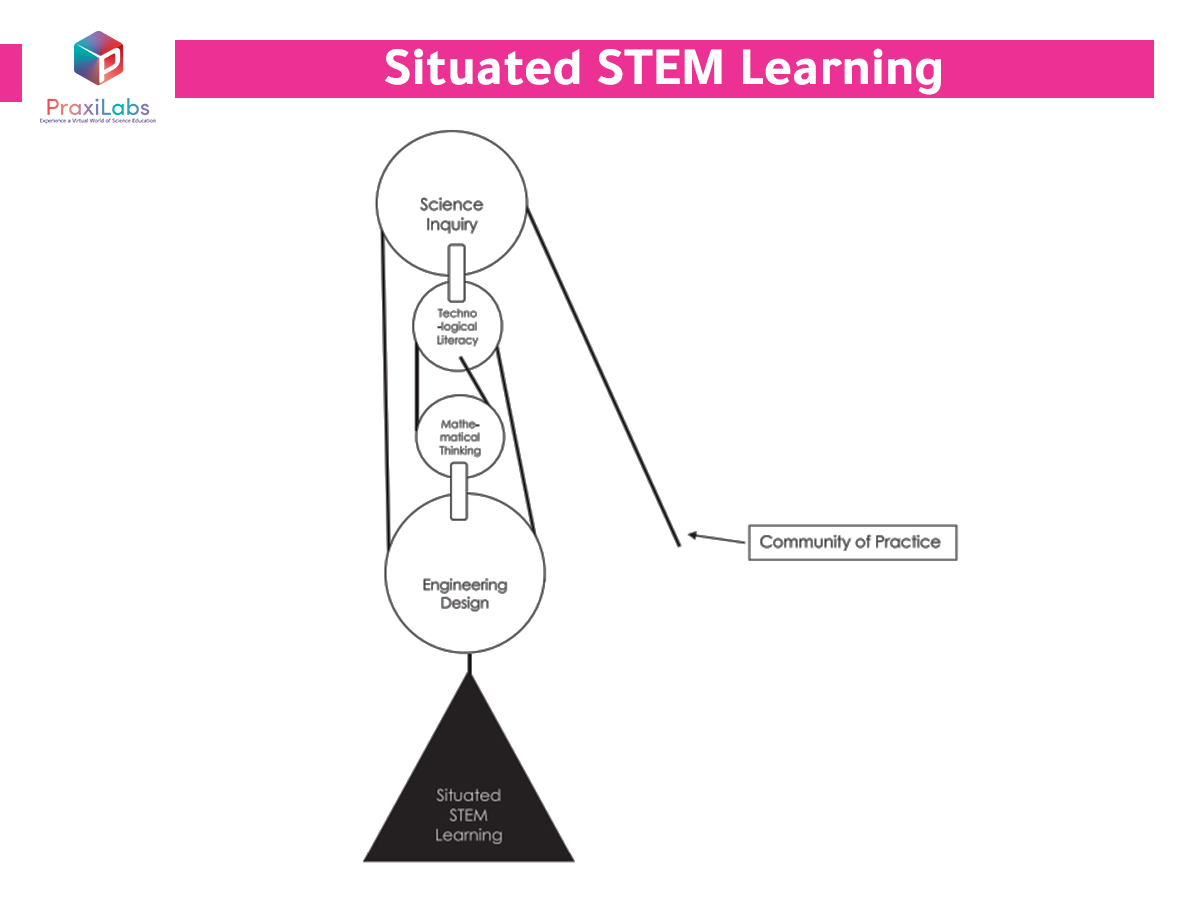
The previous graphic helps capture a conceptual framework for integrated STEM education.
The figure presents a block and tackle of four pulleys to lift loads more easily, in this case, “situated STEM learning”. Block and tackle is a pulley system that helps generate mechanical advantage to lift loads easier. The illustration connects
- Situated learning.
- Engineering design.
- Scientific inquiry.
- Technological literacy.
- Mathematical thinking.
as an integrated system. Each pulley in the system connects common practices within the four STEM disciplines and are bound by the rope of the community of practice. A complex relationship within the pulley system must work in harmony to ensure the integrity of the entire system.
It is not suggested that all four domains of integrated STEM must occur during every STEM learning experience, but STEM educators should have a strong understanding of the relationship that can be established across domains and by engaging a community of practice.
Source: (PDF) a Conceptual Framework for integrated STEM education. Available at: https://www.researchgate.net/publication/305418293_A_conceptual_framework_for_integrated_STEM_education (Accessed: 30 July 2024).
Are you tired of seeing your students struggle to grasp complex scientific concepts? Request a Live Demo Now and Increase your Students’ Learning Retention and Engagement With PraxiLabs’ virtual labs!
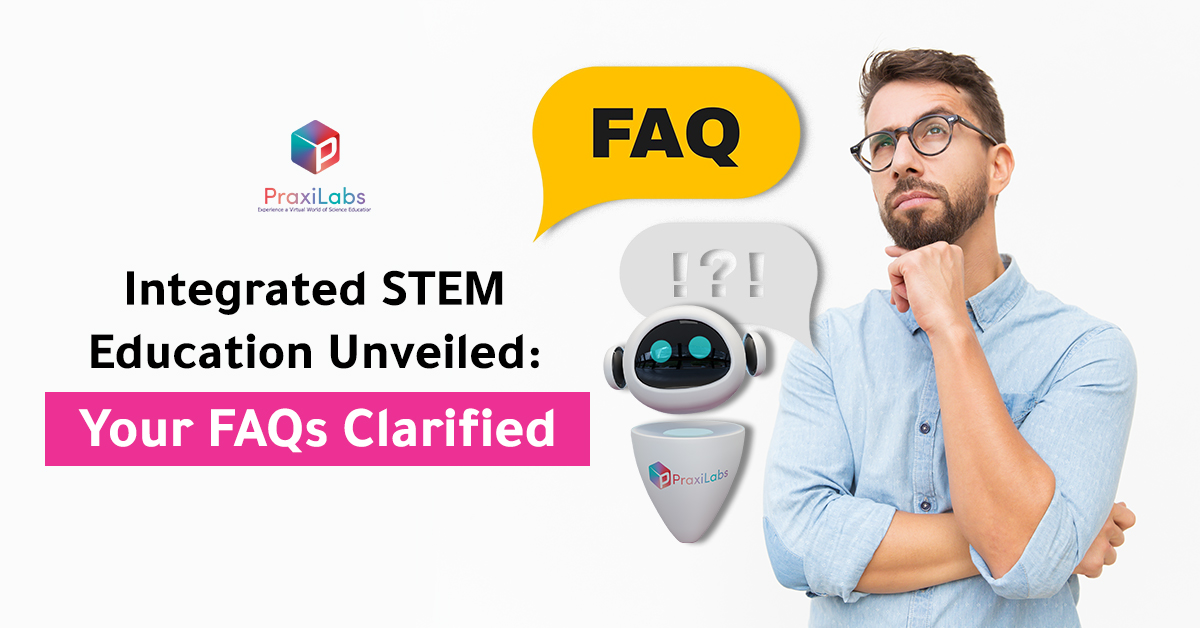
Integrated STEM Education Unveiled: Your FAQs Clarified
What is integrated stem learning?
Integrated STEM learning is an educational approach that integrates the subject matter of two or more STEM educational disciplines (Science, Technology, Engineering, and Mathematics) to create unique learning experience that aims to create an interest and a lifelong love of science in students from an early age, enabling them to become confident problem solvers in any area of life and support critical analysis skills.
What is STEM in education?
STEM in education is an abbreviation for the integration of four educational disciplines:
- S ——- Science
- T ——- Technology
- E ——- Engineering
- M —— Mathematics
The integration of these four educational disciplines aims to create an interest in sciences and make students gain and develop critical skills such as critical analysis, creativity, teamwork, communication, initiative, problem-solving, digital literacy, and more.
How to integrate STEM into teaching?
You can integrate STEM into teaching by
- Understanding the needs and interests of your students.
- Integrating technology and interactive tools such as virtual labs.
- Making connections to real-world applications.
- Celebrating achievements and recognizing your students’ efforts.
- Fostering collaboration and teamwork.
- making learning fun and engaging for your students.
- Providing opportunities for career exploration.
- Embracing diversity and inclusivity.
What is integrated steam education?
Integrated STEM education is an approach that explores teaching and learning across any two or more of the STEM subject areas ( Science, Technology, Engineering, and Mathematics), and/or between a STEM subject and one or more other school subjects.
How can we use virtual labs for Integrated STEM education?
Effective learning requires attention. The immersive and interactive 3D virtual STEM labs and simulations go a long way in providing students with the tools that allow for more focus, attention, and engagement. Students remain interested and engaged while staying alert and absorbing the information more easily. The 3D science experiments Simulations enhance students’ understanding and knowledge with a virtual hands-on experience of what they’ve learned.
In 2024, virtual labs and simulation spaces will become more prevalent, allowing students to perform their experiments and explore scientific concepts in a virtual environment. This shift is very important as it overcomes the limitations of physical lab spaces, such as safety hazards, high costs, ethical challenges, and high student dropout rates, making hands-on learning more scalable and widely available.
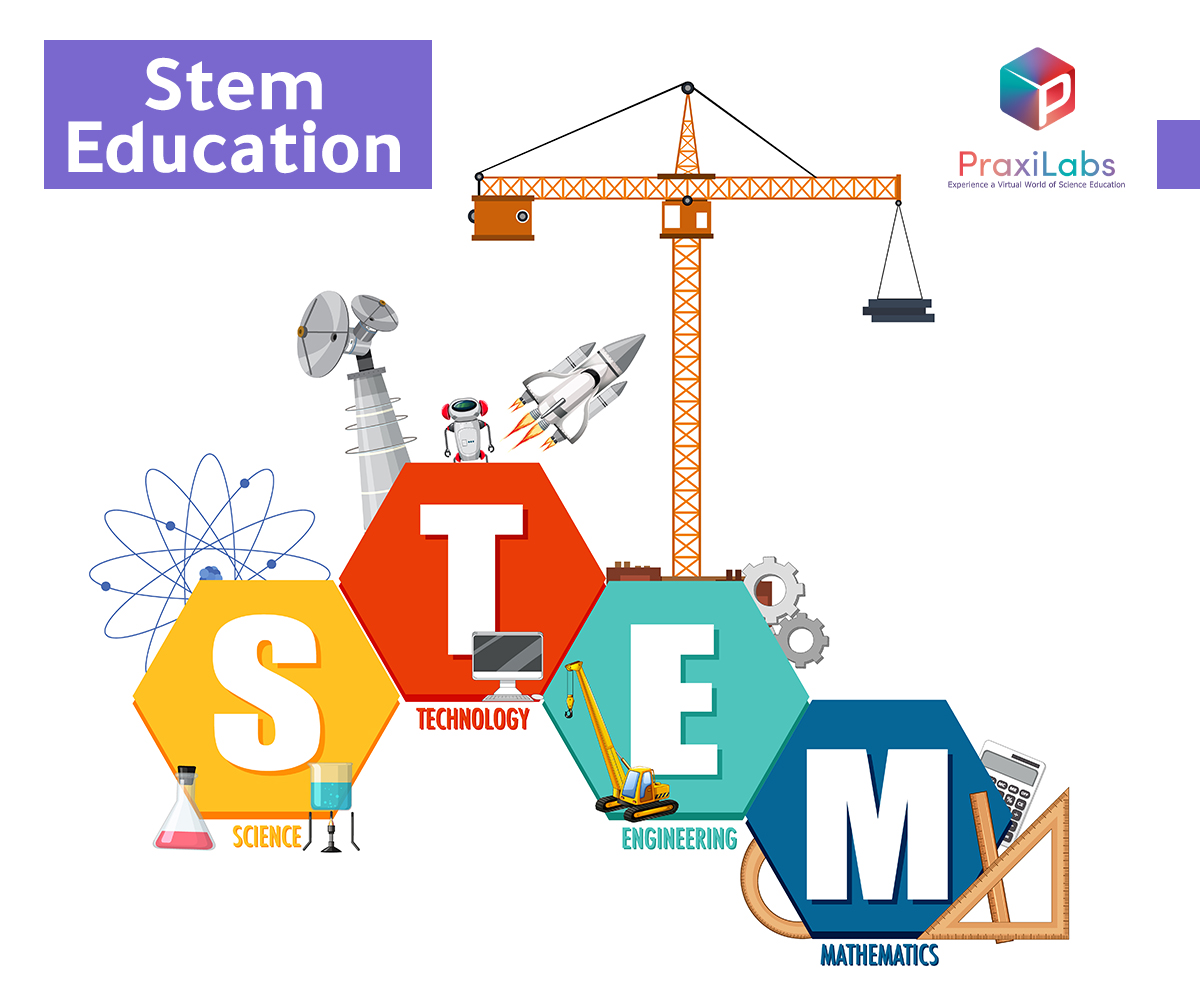
Step into Virtual Labs |Elevate Integrated STEM education with PraxiLabs
Unleash the power of virtual labs with PraxiLabs and revolutionize the way your students experience STEM-based learning. Our 3D virtual lab solution provides students with access to realistic biology, chemistry, and physics labs.
It enriches their understanding with a variety of informational and educational content to enhance their knowledge and learning, with the aim of providing equal opportunity for enhanced STEM education for students everywhere
Elevate your integrated STEM education system today!
 PraxiLabs A virtual world of science
PraxiLabs A virtual world of science

